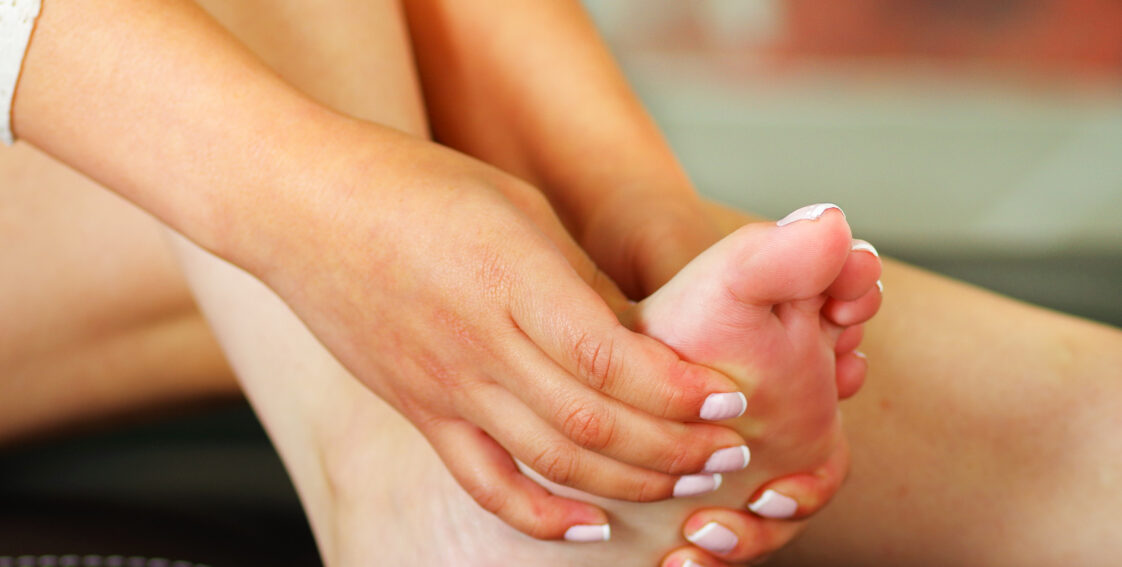
At some point in our lives 75-80 percent of us will experience back pain with it being the fifth most common reason for a visit to the doctor’s office. Most causes of back pain are mechanical or non-organic – meaning they are not caused by serious conditions, such as inflammatory arthritis, infection, fracture or cancer. Back pain is also the most frequent cause of activity limitation in people younger than 45 years old and Americans spend at least $50 billion per year on back pain. One cause of back pain that is over looked is a condition called excessive pronation.
Your Feet can be a Pain in Your Back
Dr. Bill Pohlen of Total Health Systems of Macomb County
Excessive pronation, or more commonly known as flat feet and this correlation of flat feet and back pain occurs more often than you would think. As you can see in the diagram when excessive pronation is present it causes a chain reaction that affects the rest of our body in a way that changes the length of the involved leg. This change in leg length is called Leg Length Inequality (LLI). There are two types of LLI one being structural due to anatomical causes like unequal growth rates, fractures, lesions, and degeneration. Functional LLI is far more common and is caused by physiological responses such as excessive pronation, a rolling-in of the foot and produces the apparent shortening of the leg.
When a person is standing, a difference in leg length results in an uneven foundation for the pelvis, causing various postural shifts in response. Eventually specific degenerative changes will be seen in the hip joints, pelvis and spine. When we walk the foot/ankle will over pronate, causing excessive inward (medial) rotation of the entire leg. These increased rotational forces are transmitted up the leg into the pelvis, especially the sacroiliac (SI) joint.
Clinical research confirms correlation of back pain and LLI in 79 to 89 percent of patients studied. Symptoms included chronic or recurrent sciatic pain, unilateral hip symptoms and pain in the lower back and along the thigh. If LLI is left untreated it will eventually cause the body’s ability to adapt to decrease and become exhausted and our endurance is reduced. The strain on the body increases and a recurrent cycle of not only leg misalignment but also spinal misalignment, muscle fatigue and ligament stress occurs repeatedly.
So how do you know if you have excessive pronation? The following pictures will give you a better understanding of what to look:
The feet will flair outward
Your knees will appear to be rolling inward
When looked at from behind your Achilles tendons will appear to be “bowing” toward the middle. This may occur more on one side than the other or both.
Last but not least look at the heels of your shoes. You will see abnormal wear pattern as shown in the picture.
Ok so you have found all or maybe only a few of these signs. Now what? It is time to make an appointment with either of our offices at Total Health Systems of Macomb County. Total Health Systems’ chiropractors, medical doctors and physical therapists are trained to diagnose and treat excessive pronation and conditions that result from it. Total Health Systems uses a state of the art diagnostic tool called the GaitScan System, which measures your foot biomechanics. These measurements provide Total Health Systems Healthcare Professionals with a sophisticated explanation of foot mechanics and is the most technological advanced gait analysis system available assisting our healthcare providers with foot orthotic and/or shoe solutions and patient education.
References:
- Hart LG, Deyo RA, Cherkin DC. Physician office visits for low back pain. * Frequency, clinical evaluation, and treatment patterns from a U.S. national survey. * Spine. 1995;20:11-9.
- Deyo RA, Mirza SK, Martin BI. Back pain prevalence and visit rates: estimates from U.S. national surveys, 2002. Spine. 2006;31:2724-7
- National Institutes of Health
- Friberg O. Clinical symptoms and biomechanics of lumbar spine and hip joint in leg length inequality.Spine1983;8(6):643-651.
- Friberg O.The statics of postural pelvic tilt scoliosis; a radiographic study of 288 consecutive chronic LBP patients. Clin Biomech1987;2:212-219.
- Giles LGF,Taylor JR. Lumbar spine structural changes associated with leg length inequality.Spine1982;7(2):159-162.
- Botte RR.An interpretation of the pronation syndrome and foot types of patients with low back pain.JAPA1981;71:243-253.
- Yochum TR,Barry MS,Austin WM.The short leg (revised edition).Practical Res Studies1994
